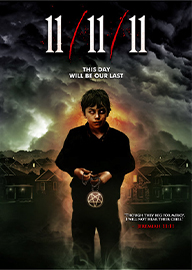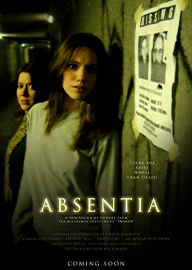The Inhabitant AKA El habitante
- 5.8
- Horror
- 2017
- 1h 33m
- PG-13
a chilling Mexican supernatural horror film directed by Guillermo Amoedo, blending demonic possession, family trauma, and dark secrets into a terrifying home invasion story. With its atmospheric tension, shocking revelations, and disturbing supernatural twists, it stands as one of the most haunting Latin American horror films of the decade.












Comments
0Reviews
0Summery
1Please sign in to comment.
Please sign in to review.
The Inhabitant (2017) emerges as a standout within the landscape of Latin American horror, a film that confronts audiences with not just supernatural terror but the lingering scars of guilt, trauma, and morality. Directed by Guillermo Amoedo, who had already made his mark in the genre through collaborations with Eli Roth, this Mexican production offers a narrative that intertwines crime thriller intensity with supernatural possession horror, ensuring that the dread operates on both psychological and visceral levels. From its opening sequence, which introduces us to three sisters preparing to rob a wealthy household, the film situates itself within a morally ambiguous world where desperation and crime intersect with forces beyond human comprehension. What begins as a home invasion soon spirals into something far more terrifying, as the siblings encounter not only the violent defenses of their intended victims but also an unimaginable evil hidden within the house’s darkest corners.
At its core, The Inhabitant is about the collision between human sin and supernatural retribution. The sisters, Maria, Camila, and Ana, are not painted as one-dimensional criminals but as desperate young women driven by circumstances and trauma into a life of crime. Their plan seems simple: break into the home of a wealthy family, steal enough money to solve their problems, and escape unnoticed. Yet the moment they penetrate the house’s walls, a chilling atmosphere takes hold, as though the home itself resents their intrusion. The dimly lit corridors, the unsettling quiet, and the locked rooms radiate menace, foreshadowing the horrors to come. When they discover that the family they intended to rob is hiding a young girl bound and locked away, their assumptions about who is victim and who is villain are immediately shattered. This girl, far from innocent, becomes the focal point of the terror as she reveals signs of demonic possession that throw the sisters into a nightmarish moral quandary.
The possession element of the film elevates it beyond a typical crime thriller, drawing the characters—and the audience—into a confrontation with forces that expose their deepest fears and regrets. The girl’s transformation from a helpless captive into a vessel for something unspeakably evil is staged with disturbing effectiveness, her eerie behavior and unearthly voice shifts creating an atmosphere of pure dread. The sisters, who began their night believing themselves to be predators, quickly realize that they are trapped prey inside a house where supernatural evil holds dominion. The tension intensifies as the possessed girl begins to reveal hidden truths about each sister, speaking with knowledge she could not possibly possess. Their sins, their traumas, and their darkest secrets are dragged into the open, weaponized by the demon to erode their sanity and pit them against one another. This narrative device blurs the line between psychological horror and supernatural terror, making the evil feel both external and deeply personal.
What sets The Inhabitant apart is its insistence that horror is not only about the monstrous but also about the moral. The supernatural possession functions as both literal and metaphorical punishment, forcing the sisters to reckon with their crimes, their guilt, and their complicity in one another’s downfall. The house itself becomes a crucible, trapping them in a situation where survival is not only a matter of escaping physical danger but also of confronting their past. This dynamic ensures that the horror resonates beyond jump scares, leaving viewers unsettled by the recognition that the true terrors often stem from human weakness and failure. The slow unraveling of the sisters’ unity mirrors the progressive tightening of the narrative’s grip, as their bond fractures under the weight of fear, suspicion, and revelation. The audience is left in a state of uneasy empathy, torn between condemning the sisters for their crimes and sympathizing with them as they confront horrors no one could be prepared for.
Amoedo’s direction is central to the film’s effectiveness. He crafts an atmosphere of claustrophobia and escalating dread, utilizing shadows, tight framing, and silence as tools of suspense. The pacing alternates between bursts of violence and stretches of unnerving stillness, mirroring the way fear operates in waves of intensity and anticipation. The cinematography captures the house as a living entity, its corridors and locked doors functioning almost like characters in their own right. The sound design, crucial in horror cinema, is meticulously layered: whispers, creaks, and guttural growls seep into the auditory space, creating a sensory environment where the viewer feels constantly on edge. These technical elements work together to build a sense of inevitability, as though the sisters’ fates were sealed the moment they crossed the threshold.
The performances are another pillar of the film’s impact. The actresses portraying the sisters deliver layered portrayals that capture both toughness and vulnerability. Their fear is palpable, but so is their love for one another, which makes their eventual disintegration all the more tragic. The possessed girl, meanwhile, delivers a chilling performance that defies her youth, embodying both innocence and malevolence in a way that unsettles on a primal level. Her ability to switch between childlike fragility and demonic cruelty adds depth to the horror, preventing it from slipping into caricature. This balance of strong performances ensures that the film’s emotional stakes remain as high as its supernatural scares, keeping the audience invested not only in who survives but also in what survival means when one’s soul is compromised.
By the time The Inhabitant reaches its climax, the narrative has built to a fever pitch of terror and despair. The final act forces the remaining characters into direct confrontation with the demon’s power, as well as with their own responsibility for the situation. Without providing easy resolutions, the ending underscores the inexorability of guilt and the destructive nature of secrets left unacknowledged. The lingering ambiguity of the conclusion amplifies the unease, leaving the audience haunted by the possibility that evil cannot be contained or destroyed, only endured and passed on. This refusal to tie the story neatly reflects the broader themes of inevitability and human frailty that run throughout the film, ensuring that its impact endures long after the credits roll.
Upon release, The Inhabitant received praise from horror enthusiasts for its atmospheric tension, strong performances, and willingness to merge crime thriller elements with supernatural horror. While some critics noted its adherence to familiar tropes of possession cinema, many acknowledged that its execution and cultural specificity gave it a distinctive edge. In the context of Mexican and Latin American horror cinema, it stands as a work that contributes meaningfully to the region’s growing reputation for innovative and unsettling genre films. Its exploration of family, guilt, and evil resonates universally, while its grounding in a distinctly Mexican context enriches its texture and thematic resonance.
Years later, The Inhabitant remains a film that rewards both casual viewers seeking a terrifying experience and critics analyzing the intersection of morality and horror. Its ability to operate simultaneously as a suspenseful supernatural thriller and a meditation on human flaws ensures its lasting relevance. More than just a story about demons and possession, it is a story about the inescapability of one’s past and the way guilt manifests in destructive cycles. The house may be haunted by an otherworldly entity, but it is equally haunted by the choices, mistakes, and secrets of those who dare to enter.